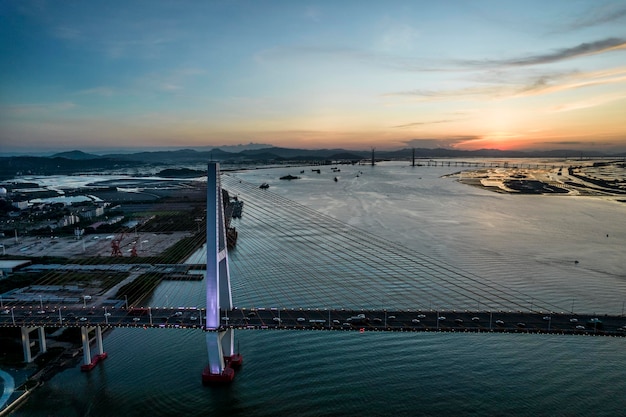How do Harbours Work?
Harbours play a crucial role in facilitating trade, transportation, and economic growth around the world. They provide essential infrastructure for ships to anchor, load and unload cargo, and ensure safe navigation in and out of port. This article will explore the inner workings of harbours, from their basic components to the sophisticated systems that make modern ports efficient and reliable.
Basics of Harbour Infrastructure
At its core, a harbour is a sheltered body of water where ships can find refuge from rough weather conditions. However, modern harbours encompass much more than just a safe anchorage. They are equipped with various facilities to accommodate vessels of different sizes and perform a wide range of activities related to maritime commerce.
One of the key elements of a harbour is a breakwater or jetty. These structures, often made of concrete or rocks, extend into the sea and provide protection against waves and currents. By creating a calm zone behind the breakwater, ships can safely navigate and maneuver within the harbour.
Quays, also known as wharves or piers, are another essential component of harbours. These platforms are constructed parallel to the shore and provide berthing spaces for vessels to tie up. Quays are equipped with mooring bollards, fenders, and other equipment to secure ships and protect them from damage during the loading and unloading process.
In addition to breakwaters and quays, harbours often have docks and slips to accommodate larger vessels. Docks are deep-water basins where ships can be safely moored while undergoing repairs or maintenance. Slips, on the other hand, are narrow canals designed to hold ships in place while loading or unloading cargo.
The Role of Harbour Equipment
Harbours rely on a diverse range of equipment and machinery to facilitate the smooth flow of goods and ensure efficient operations.
Cranes are among the most recognizable pieces of equipment in a harbour. These towering structures, either fixed or mobile, are used to lift heavy cargo containers and load them onto or off ships. Cranes are typically equipped with spreader bars that can be adjusted to fit different container sizes, allowing for efficient stacking and storage.
Another essential piece of equipment is the forklift. Forklifts are used to transport cargo within the terminal, from the storage area to the ship or vice versa. They are highly maneuverable and capable of lifting heavy loads, making them indispensable in the day-to-day activities of a harbour.
Tugboats also play a vital role in harbour operations. These powerful vessels are responsible for assisting larger ships in maneuvering within the harbour, especially during docking and undocking. Tugboats use their strong engines and specialized towing equipment to push or pull ships, ensuring safe navigation in confined spaces.
Port Security and Navigation
Ensuring the safety and security of a harbour is of paramount importance. Ports are subject to strict regulations and security measures to protect against unauthorized access, smuggling, and other illegal activities.
Port authorities are responsible for overseeing port operations, enforcing regulations, and maintaining security. They work closely with customs officials, coast guards, and other law enforcement agencies to monitor incoming and outgoing vessel traffic, inspect cargoes, and ensure compliance with international maritime standards.
Navigation aids, such as buoys, lighthouses, and channel markers, are strategically placed around harbours to guide ships safely into and out of port. These visual and auditory signals provide important information about water depths, navigational routes, and potential hazards. Technologies such as radar and GPS also aid in safe navigation by providing real-time positioning information to the ship’s crew.
Harbour Logistics and Management
Harbours are complex logistical hubs that require careful planning and coordination to handle the vast amount of cargo passing through them.
Port terminals operate as logistics centers, efficiently managing the flow of goods between different transportation modes, such as ships, trucks, and trains. They have extensive storage facilities, including warehouses and container yards, where cargo can be temporarily stored before being transported to its final destination.
To ensure efficient operations, harbours use advanced port management systems. These software platforms enable real-time tracking of vessels, containers, and other assets within the port. By integrating data from various sources, such as shipping lines, customs authorities, and terminal operators, these systems streamline processes, optimize resource allocation, and minimize delays.
Free trade zones or special economic zones are another common feature of modern harbours. These designated areas offer tax incentives and streamlined customs procedures to attract international businesses and stimulate economic growth. Free trade zones promote a wide range of activities, including manufacturing, warehousing, and transshipment, and provide a strategic advantage for businesses operating within their boundaries.
“Harbours are not merely physical structures; they are the lifelines of global trade, connecting economies and enabling the exchange of goods on an unprecedented scale.” – Maritime Expert
The Future of Harbours
As global trade continues to expand, harbours must continuously adapt to meet evolving demands and challenges. Here are some of the trends shaping the future of harbours:
1. Automation and Robotics: Harbours are increasingly embracing automation technologies. Automated cranes, guided vehicles, and remote-controlled operations enhance efficiency, reduce labor costs, and minimize the risk of accidents.
2. Sustainable Practices: With growing environmental concerns, harbours are striving to become more sustainable. This includes implementing energy-efficient technologies, reducing emissions, and adopting eco-friendly practices in waste management and water treatment.
3. Enhanced Security Measures: Harbours are investing in advanced security systems, including surveillance cameras, biometric scanning, and cybersecurity measures, to combat evolving threats and safeguard critical infrastructure.
4. Smart Port Concepts: The concept of smart ports involves using data analytics, Internet of Things (IoT) devices, and artificial intelligence to optimize port operations, enhance safety, and improve overall efficiency.
In conclusion, harbours are complex systems that encompass various components, equipment, and management strategies. They serve as vital links in the global supply chain, facilitating trade, and economic growth. By continually adapting and embracing innovation, harbours will continue to play a crucial role in shaping the future of international commerce.



